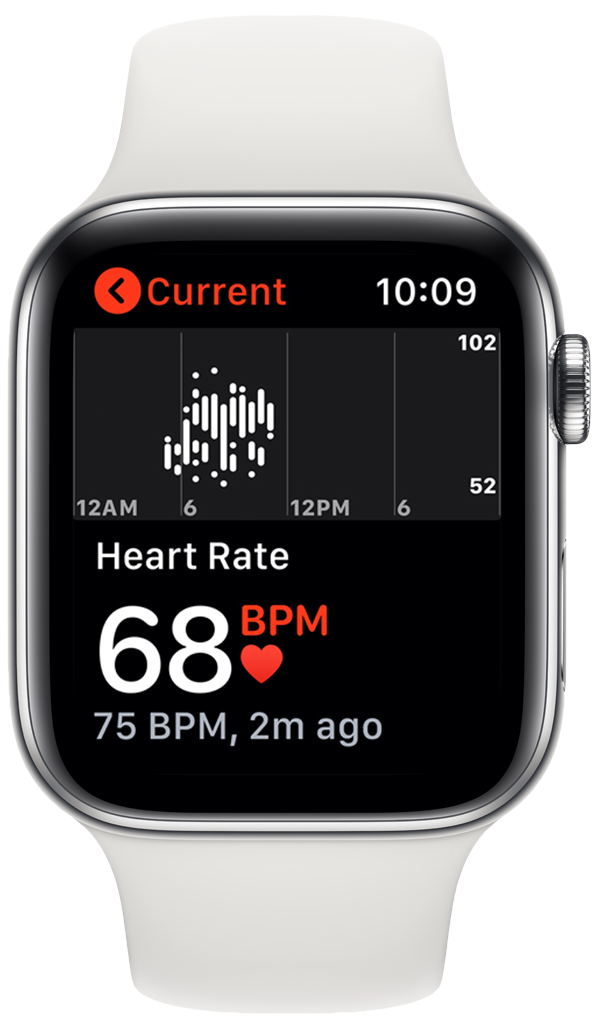Wearables Like the Apple Watch Show Promise in Detecting COVID-19 Infections
The Washington Post reports that a pair of preliminary studies have found that wearable health trackers like the Apple Watch can detect coronavirus symptoms days before their wearers realize they’re sick. Stanford University researchers found that heart rate changes let them detect coronavirus infection in 11 out of 14 patients in their study, sometimes even before there was an official diagnosis.
The real star of these studies wasn’t the Apple Watch, but the Oura health-tracking ring, which can detect heart rate, breathing, and body temperature. Researchers at WVU’s Rockefeller Neuroscience Institute found that the Oura ring enabled them to predict COVID-19 infections up to three days before symptoms appeared, when the virus is most infectious.
If you own an Apple Watch or other health tracker that integrates with Apple Health, and you’d like to participate in the studies, the Scripps Research DETECT Study has an open call for volunteers—you just need to install the MyDataHelps app. Stanford’s study is also looking for participants, supporting the Apple Watch and other health trackers, though they’re looking for people with a higher risk of COVID-19 exposure.
While wearable health-trackers show promise in tracking and hopefully controlling COVID-19, these studies also demonstrate areas in which the Apple Watch could improve. Future Apple Watch generations would benefit from built-in body temperature and blood oxygen measurements. Low blood oxygen levels are a key indicator of COVID-19 infection, and those infected often have low blood oxygen levels without even realizing it. Sadly, the Apple Watch already has the capability to measure your blood oxygen levels, but the US Food and Drug Administration hasn’t let Apple enable it.

Seems it isn’t available in UK.
The studies, you mean? That’s not terribly surprising given differing privacy and healthcare regulations.
Sadly, the Apple Watch already has the capability to measure your blood oxygen levels, but the US Food and Drug Administration hasn’t let Apple enable it.
You might also phrase that as “Apple hasn’t done the required testing for FDA approval yet.”
The link goes to an article from City Journal, which is the house publication of the Manhattan Institute, a fairly right wing libertarian organization (the lead article is currently talking about how civilization is collapsing, “intensified by Antifa radicals.”) I’m not sure I would take their analysis without ordering a five pound bag of salt.
No not surprising, but I meant the app: “Not available in your country/region”
I tried participating in various studies, but I was plagued with non-communicating researchers, lousy software, and no indication whether a study has ended.
I was thrilled to help with one diabetes study, and I filled out my daily surveys on the iPhone. Each survey took about ten minutes, and I had run into bugs and questions that were difficult to figure out. I emailed the researchers about the problems I was having, but I got no answers. Finally, I called the university that was associated with the study to talk to the main researcher.
The person on the phone listened politely, but was puzzled. The professor I was trying to reach had retired from the university a few years before — before I had even signed up. No one was looking at the data that was coming in and no one was monitoring the email address of the study.
Apparently, the study was done as a student research project which included writing the software. Once the student graduated, they were done. Even worse, the project wasn’t even about diabetes. The purpose was to demonstrate how the iPhone and the health metrics it could gather was useful in conducting studies. The student used an older diabetes study as a template for the demonstration.
I had been spending almost a year filling out forms and giving permission to read my Health data on my phone for a study that never really existed.
What university was that?
I can’t remember the name of the university. It was a while ago. Maybe when the iPhone 4S or iPhone 5 came out.
One of the first issues had to do with some assumptions it looked like the project was making. My diabetes is under good control without medication. A lot of the questions had to do with my blood glucose levels, the medication I was on, and whether I was taking my medication. I wasn’t sure if I was a good subject for the study, and I got in contact with the developer. I’m not sure whether there was an email address somewhere or a feature of the software where you could ask a question. I never heard from anyone.
The app kept asking the same questions again and again, and there was never any feedback. There were bugs and the application kept crashing, but there was never any updates to fix the bugs. I was getting more and more frustrated.
I finally called the university doing the study. I think the name of the university was mentioned in the App Store. I can’t remember where I saw the name of the researcher who was supposedly leading this study. It might have been in one of the release documents I was suppose to fill in when I joined.
The drugstore fingertip pulse oximeters are useful, but they aren’t up to the standards of the clinical ones. My understanding is that their accuracy starts out at around +/- 2-3% above 95% (and that’s about the reproducibility I get with mine), then gets increasingly bad below about 90%. They’re really sensitive to movement and how warm your hands are. Mine tells me that I’m dead if my hands are even a little bit cold. Different fingers give me different readings.
Trying to get good data from the wrist is intrinsically much harder than from a finger. Fingertips have lots of capillaries right at the surface, wrists don’t. While I’d love to have oximetry in the watch, I’m not holding my breath for the near future.